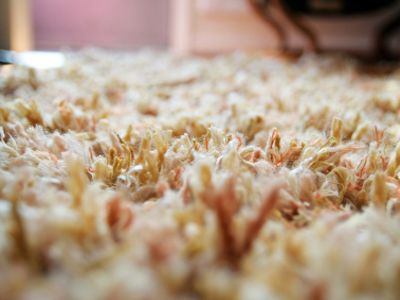The honest answer is, "it depends," but you definitely have some best practices to follow to ensure your new floor is ready to be used. First, don't look for deals when buying your materials. Since you're taking your time to install the floor yourself, don't get cheap with one of the most critical steps -- using the right adhesive -- whether it's pre-applied to your tiles or used separately.
Once you do choose a quality adhesive, follow the manufacturer's instructions exactly. Different kinds of adhesive require different waiting periods before you can start using your floor again. If the tiles and/or adhesive you've bought don't give a clear time frame, then waiting 72 hours is always a good idea.
Advertisement
The waiting period recommended by the manufacturer of your tiles/adhesive will likely assume you've done a few other things right while installing your vinyl tiling. For example, make sure your surface is well prepared. Concrete that is damp or too new won't be a good surface for the adhesive to grab. If you're not using self-adhesive tiles (that is, you're putting the adhesive down on the floor, before the tiles), you'll have to let your adhesive "breathe" like a fine wine. Again, follow the manufacturer's instructions for the amount of time you should wait before applying the tiles after you've spread out the adhesive.
Finally, regardless of what type of tile/adhesive you've used, make sure you roll the floor as soon as possible after laying all the tiles. If the space is really small, you might be able to get away with using a baker's rolling pin. However, for any decent-sized space, you'll need a proper floor roller. You can rent one from a home improvement store, so arrange to have the roller on hand before you need it. Work from the center of the floor and roll out. After you've rolled the floor, you can start clocking your waiting period.
Advertisement

